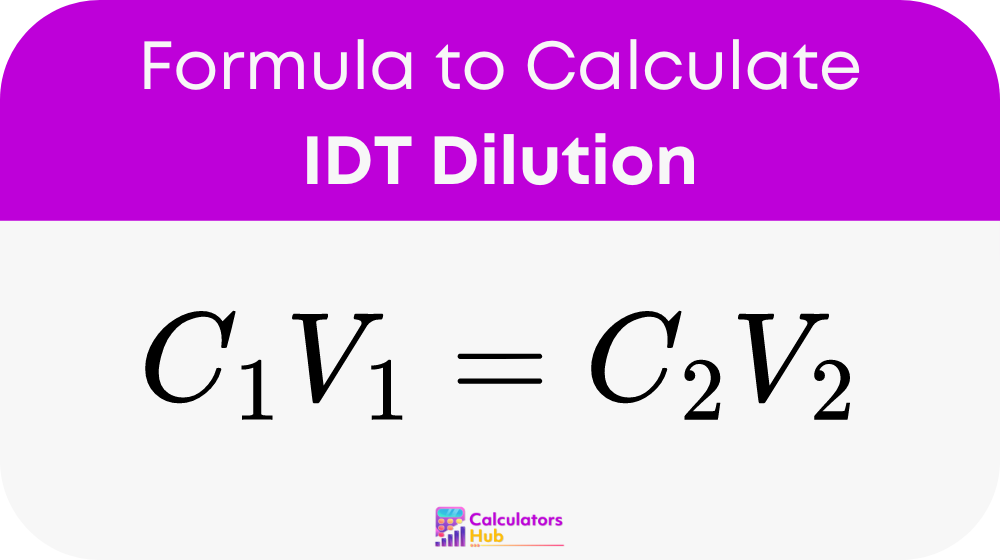The IDT Dilution Calculator simplifies the task of diluting solutions to desired concentrations. It is an indispensable tool in laboratories, where precise concentrations of chemicals are necessary for successful experiments. By inputting a few simple parameters, the calculator ensures that users achieve accurate dilution ratios, thereby enhancing the reliability of their experimental results.
Formula of IDT Dilution Calculator
The cornerstone of the IDT Dilution Calculator is the formula:

This equation helps in calculating the volume and concentration adjustments required for dilutions:
C1represents the initial concentration of the primer stock solution (in mol/L or M).V1denotes the volume of primer stock solution to be diluted (in L).C2is the final desired concentration of the diluted primer solution (in mol/L or M).V2is the final volume of the diluted primer solution (in L).
For practical applications, if you know the desired final volume and need to find the final concentration, the formula rearranges to:
C2 = (C1 * V1) / V
Practical Application Table
| Initial Concentration (C1) | Final Desired Concentration (C2) | Initial Volume (V1) | Final Volume (V2) | Volume of Primer Needed (V1) |
|---|---|---|---|---|
| 10 mM | 1 mM | 1 L | 10 L | 1 L |
| 20 mM | 1 mM | 500 mL | 10 L | 0.5 L |
| 50 mM | 2 mM | 2 L | 25 L | 1 L |
| 100 mM | 0.5 mM | 100 mL | 20 L | 0.1 L |
| 200 mM | 10 mM | 1 L | 20 L | 0.1 L |
Example of IDT Dilution Calculator
For instance, if you have a primer solution with a concentration of 10 mol/L and you need 1 L of a 1 mol/L solution, the calculator will indicate that you need to mix:
V1 = (C2 * V2) / C1 = (1 mol/L * 1 L) / 10 mol/L = 0.1 L
This calculation shows that 0.1 L of the stock solution is needed to achieve the desired concentration.
Most Common FAQs
A1: If you know the final volume (V2), rearrange the formula to find V1 as shown in the example.
A2: Ensure all units are consistent and that the solution is thoroughly mix after dilution.
A3: Yes, while primarily designed for primers, it can be used for other solutions provided the user verifies compatibility.